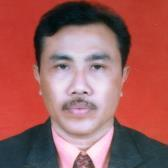International Journal of Education and Management Engineering (IJEME)
IJEME Vol. 7, No. 4, 8 Jul. 2017
Cover page and Table of Contents: PDF (size: 404KB)
Measuring the Effectiveness of BLCS Model (Bruner, Local Culture, Scaffolding) in Mathematics Teaching by using Expert System-Based CSE-UCLA
Full Text (PDF, 404KB), PP.1-12
Views: 0 Downloads: 0
Author(s)
Index Terms
Teaching model, local culture, scaffolding, CSE-UCLA, Expert System
Abstract
Many teachers experience difficulties in starting an instruction and in how to make the students learn appropriately. Meanwhile, the teacher has to make the students learn in order the teaching conforms to the four pillars of education according to UNESCO, i.e.: learning to know, learning to do, learning to be, and learning to live together in peace and harmony. In relation to this, a study was conducted to the students of primary schools in Singaraja to see the effectiveness of BLCS model (Bruner, Local Culture, and Scaffolding) in the teaching of mathematics through a measurement using Expert System - based CSE-UCLA. The effectiveness of the teaching model was seen from learning activities, learning achievement, and the students' response to the teaching. Data were collected through observation, test and questionnaire and were then analyzed descriptively. The results show that BLCS model is an effective model to be used in the teaching of mathematics.
Cite This Paper
I Made Ardana, I Putu Wisna Ariawan, Dewa Gede Hendra Divayana,"Measuring the Effectiveness of BLCS Model (Bruner, Local Culture, Scaffolding) in Mathematics Teaching by using Expert System-Based CSE-UCLA", International Journal of Education and Management Engineering(IJEME), Vol.7, No.4, pp.1-12, 2017. DOI: 10.5815/ijeme.2017.04.01
Reference
[1]VandeWalle.J.dkk.Elementary and Middle School Mathematics, Teaching Developmentally.USA. PearsonEducation, Inc; 2013.
[2]Steffe, L.P & D'Ambrosio Beatrizs. Toward APO Working Model of Constructivist Teaching; APO Reaction To Simon. Journal for Research in Mathematics Education. Vol. 26. No. 2, (1995), 146-159.
[3]Ardana. Pembelajaran Matematika Berkarakter. Makalah disajikan dalam rangka SemNas oleh FPMIPA IKIP PGRI BALIdi Grand Mutiara Ballroom Hotel Nikki, Denpasar Bali pada Tgl 13/1/2016; 2016.
[4]Ardana. Standar Proses Matematika dan Zpd dalam Implementasi Kurikulum 2013. Makalah disajikan dalam rangka seminar Regional Bali dengan tema "Pembelajaran Matematika yang Eksploratif dan Inovatif dalam Implementasi Kurikulum 2013" pada Tgl 1/3/2014; 2014.
[5]Marpaung. Y. Pengelolaan Proses Belajar Mengejar Matematika. Jakarta. Depdiknas; 2002.
[6]Raka Joni. T. Teori-teori Belajar. Jakarta. P2LPTK; 1988.
[7]Soedjadi. Kiat Pendidikan Matematika di Indonesia. Jakarta. Dirjen DIKTI, Depdiknas; 2000.
[8]Soetarno. Ragam Budaya Indonesia, Direktorat Pembinaan PendidikanTenaga Kependidikan dan Ketenagaan Perguruan Tinggi - Dirjen Dikti -Depdiknas, Jakarta; 2004.
[9]Widja, I.G. Keserasian Transformasi Nilai dan Pembangunan Berwawasan Budaya dalamMasyarakat Bali, Perspektif pendidikan. makalah disajikan dalam Seminar Nasional Keserasian Transformasi Nilai dan Pembangunan Berwawasan Budaya. Denpasar: Fakultas Sastra; 1990.
[10]Ardhana, I.G.G, Sudharta, R.T. Keserasian Transformasi Nilai dan Pembangunan Berwawasan Budaya Dalam Masyarakat Bali. Makalah Disajikan Dalam Seminar Nasional Keserasian Transformasi Nilai dan Pembangunan Berwawasan Budaya. Denpasar: Fakultas Sastra; 1990.
[11]Slavin, R.E. Educational Psychology: Theory and Practice. Fourth Edition. Needham Heights: Allyn and Bacon Publisher; 1997.
[12]Lui, A. Teaching in the Zone: An Introduction to Working Within the Zone of Proximal Development (ZPD) to Drive Effective Early Childhood Instruction. Children's Progress; 2012.
[13]Novak, J.D & Gown, D.B. Learning How To Learn. New York: Cambridge University Press; 1985.
[14]Berg. Euwe Van Den (Edt). Miskonsepsi Fisika dan Remidiasi. Salatiga: Universitas Kristen Satya Wacana; 1991.
[15]Tayibnapis, F.Y. Evaluasi Program. Jakarta: PT. Rineka Cipta; 2000.
[16]Divayana, D.G.H. "Penggunaan Model CSE-UCLA Dalam Mengevaluasi Kualitas Program Aplikasi Sistem Pakar." SNATIA 2015, (2015), 165-168.
[17]Divayana, D.G.H., & Sugiharni, G.A.D. "Evaluasi Program Sertifikasi Komputer Pada Universitas Teknologi Indonesia Menggunakan Model CSE-UCLA,". Jurnal Pendidikan Indonesia, Vol.5, No. 2, (2016), 865–872.
[18]Divayana, D.G.H. "Development of Duck Diseases Expert System with Applying Alliance Method at Bali Provincial Livestock Office," International Journal of Advanced Computer Science and Applications, Vol. 5, No. 8, (2014), 48-54.
[19]Hamdani, "Sistem Pakar Untuk Diagnosa Penyakit Mata Pada Manusia," Jurnal Informatika Mulawarman, Vol. 5, No. 1, (2010), 13-21.
[20]Eviyanti, A. "Aplikasi Sistem Pakar Untuk Mendiagnosis Gangguan Pencernaan Pada Orang Dewasa," TEKNOLOJIA, Vol. 5, No.1, (2012), 1-10.
[21]Sugiharni, G.A.D., & Divayana, D.G.H. "Pemanfaatan Metode Forward Chaining Dalam Pengembangan Sistem Pakar Pendiagnosa Kerusakan Televisi Berwarna," Jurnal Nasional Pendidikan Teknik Informatika (JANAPATI), Vol. 6, No.1, (2017), 20-29.


